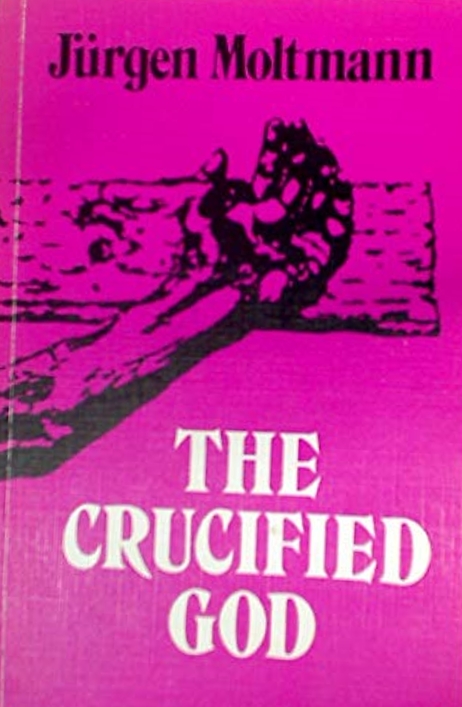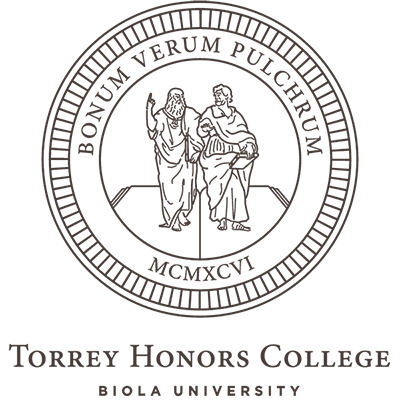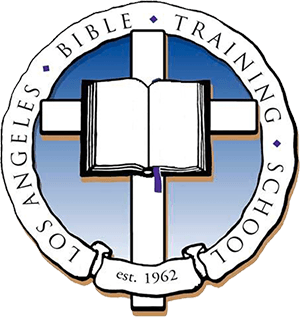A scene from The Canterbury Psalter (12th century)
Blog
Thoughts on Moltmann’s The Crucified God

I recently led a discussion on Jürgen Moltmann’s book The Crucified God: The Cross of Christ as the Foundation and Criticism of Christian Theology. Here are some notes I took as I re-read the assigned text, the 90-page-long chapter six (also bearing the title “The ‘Crucified God'”), and some reflections that came to me after class time.
Reading the book in 2022, it definitely feels fifty years old. The German first edition was 1972, and the way Moltmann writes about the “death of God” theology as a current event, the way he interacts with certain forms of existentialism, and the footnotes to only the very early positions of contemporaries like Pannenberg and Eberhard Jüngel mark this as coming from the early seventies. It was his second real book, after only Theology of Hope. (“Back when I was reading Moltmann in the early nineties, it felt more contemporary in a number of ways,” types grandpa, squinting at the computer screen above his trifocals.)
My opening question for discussion was, “Is the cross about God and humanity, or about God?” I raised the question because in the early pages of the chapter, Moltmann is very good at encouraging readers to look beyond the “horizon of soteriology” in which we habitually think about the cross, and to consider the cross from God’s point of view. This exhortation to think bigger thoughts can help readers break out of the tendency to privatize or, better, functionalize the cross, reducing it to an instrumental role. It begins to open the mind to the inbreaking of something not merely anthropocentric, but theocentric in the cross. Line after line in these early pages serve as invitations to consider the cross in truly theological perspective, that is, in its implications for theology proper, the doctrine of God. It can be one of those moments when “Big God Theology” bursts in on the reader. Moltmann seems to want us to answer that the cross is about God.
But as the pages go along, it turns out that what Moltmann means by this is that the event of the cross is an event in which God constitutes himself as God. That is, Moltmann gets us and our salvation out of the center of attention, only to bring us and our salvation back to the center in a different way, as the place where God’s true being is not only revealed but enacted.
“There is a trinitarian solution to the paradox that God is ‘dead’ on the cross and yet is not dead, once one abandons the simple concept of God.” (203) By “simple” here, Moltmann is not quite talking about the doctrine of divine simplicity. The contrast is more basic than that; he means that if you tried to believe in a merely unipersonal God, you would not be able to sustain that thought in light of the claim that God died on the cross. You would have to introduce the Father-Son distinction at that point, if you weren’t operating with it yet. It’s a good point, and it’s one that could also be made in reflection on incarnation, that is, in the Father’s sending of the Son. Moltmann is compressing the theological point pretty drastically in pursuit of his staurocentrism (cross-centredness). This line could be charitably read as staurocentric concentration: bringing a wide range of theological distinctions all to bear o n the cross as the point of focused attention. It could also be, I think, an early indicator of staurocentric reductionism in the book.
I don’t have much to say (here) about the problems Moltmann will work himself into when he advances his mature trinitarian theology in 1980’s The Trinity and the Kingdom). I just want to note that Hegel shows up on page 217 of Crucified God, and by page 218 Moltmann can speak of “God, who in the death of Jesus has revealed himself and constituted himself in nothingness…” as part of the “eschatological history of God.” So you might say things are getting pretty serious.
When Moltmann talks about the cross as the center of Christian theology, he helpfully reminds us that he always means the cross taken together with the resurrection. And even that is, he says, sort of the wrong way to put it, since it merely stretches out in time as two events something that must be apprehended in its unity: “the resurrection of the crucified Christ” and “the cross of the risen Christ.” (204)
One of Moltmann’s goals is that in this theological project “the person of Jesus comes to the fore in its totality as the Son, and the relationship of the Godhead and the manhood in his person fall into the background.” (207) This is a great goal, especially if the alternative is the kind of Christology that has much to say about the two natures, and then considers its work practically finished without bringing in the actual second person of the Trinity. Moltmann provides a number of excellent hooks for focusing on the Son. The three chapters before this chapter include some highly stimulating close reading of the trial of Jesus. When Moltmann does get into setting forth some Christological categories here, though, he is so polemically oriented against the doctrine of Christ’s two natures that he seems to be looking for a way to eliminate the distinction. Much remains unclear. But some lines of thought here would certainly cure you of naive Nestorianism.
It is best to avert one’s eyes from what Moltmann makes of Luther’s theology of the cross, or how he reports on the implications of Calvin’s reading of I Cor 15. Like so many of the late twentieth century’s constructive theologians, he was often constructive at the cost of responsible use of historical theology. To put it politely, these sections ought to be read with the source material directly at hand.
Some of Moltmann’s remarks on the doctrine of the Trinity only make sense if you place yourself in the late 1960s and are convinced that nobody (at least nobody who matters) is doing any writing about the Trinity. He says that “modern surrender of the doctrine of the Trinity or its reduction to an empty, orthodox formula is a sign of the assimilation of Christianity to the religions felt to be needed in modern society.” (215) His idea seems to be that nobody is making use of the doctrine of the Trinity: liberals deny it for critical reasons, while conservatives simply enshrine it as dead formula. He therefore proposes putting it to use in the heart of a doctrine of the crucifixion. He returns to this construal of the contemporary scene on p 236, where he begins a paragraph with, “the doctrine of the Trinity enjoys no special significance in the history of Western theology.” The next several pages are interestingly argued, but readers really need to think critically about whether this kind of lament applies to the contemporary scene in general, or to their church and theology traditions in particular. At any rate, this is an early and classic instance of how people talked in this phase of the revival of academic interest in the Trinity.
By page 240, Moltmann is endorsing some version of Rahner’s identification of the economic Trinity with the immanent Trinity, and vice versa. Identifying the two (or collapsing them into each other as it seems to me) does keep us from treating them as related like “original and copy, idea and manifestation.” But it ties some knots that will be hard to untangle. Again, Moltmann will have a lot more to say about this by 1980’s Trinity and the Kingdom, where he will be much clearer about the relation of God’s eternity and salvation history.
It’s interesting to consider this very early statement on the immanent Trinity in light of two biographical moments. First, a little-discussed detail, reported in Moltmann’s 2008 autobiography A Broad Place: He met Elisabeth Wendel (who he would soon marry) in 1949, and was fascinated by three things about her. Notice the third thing:
I was personally reserved and admired her political theology, which was radically democratic and pretty far left, envied her for her background in the Confessing Church, listened astonished to her Barthian shibboleth ‘the immanent Trinity,’ in the light of which theologians were weighed and for the most part found wanting. Luckily I found grace in her eyes. (A Broad Place, p. 45)
Isn’t it interesting to imagine 23-year-old Jürgen navigating dates with Elisabeth, wondering in astonishment if his doctrine of the immanent Trinity is sufficiently Barthian for her? Goodness.
Second, and more famously, there is the letter Karl Barth wrote to Moltmann in 1964, in which he warmly complimented Moltmann’s first book, Theology of Hope, but pressed home exactly one question: Doesn’t the elevation of eschatology to an all-determining principle make Moltmann’s God rather needy and dependent on the outcome of world history? In other words, “Would it not be wise to accept the doctrine of the immanent trinity of God?” (Barth, Letters 1961-1968, p 176). Barth ends with a hello to Elisabeth (!), thanking her for a recent essay. In Moltmann’s reply to Barth, he paraphrases Barth’s concern as a recommendation to replace a dominatingly one-sided eschatology with an immanent trinitarianism which “should function as an expository canon for the proclamation of the lordship of Jesus Christ.” (Letters, 348.) Moltmann is kind and deferential to the elderly Barth, but makes it clear that he is seeking to find his own way for several reasons. Some of those reasons appear here in The Crucified God.
The chapter winds to its end (it’s a long chapter, and more demanding than I remembered!) with some very radical stances and large questions about whether we ought to speak of God at all, since “God” is actually an event that takes place between Jesus and his Father in their Spirit on the cross. Can we pray to such an event? In what sense is it personal? The answers are complicated, and Moltmann works them out in dialectical tension with theism and atheism, two systems that arise in a polarity which Moltmann thinks cross-centered trinitarianism drives us beyond. Arresting statements litter the pages, by turns deeply exciting and highly objectionable: “The Trinity is no self-contained group in heaven, but an eschatological process open for men on earth, which stems from the cross of Christ.” (p. 249)
In A Broad Place (2008), Moltmann looks back and freely admits that Crucified God contains much that is “harshly formulated and overstated.” (p. 200) It’s true! And this is one of the reasons it continues to be stimulating all these years later, even for theologians who, like me, have to treat its most characteristic elements as signposts marking wrong turns.
About This Blog

Fred Sanders is a theologian who tried to specialize in the doctrine of the Trinity, but found that everything in Christian life and thought is connected to the triune God.


